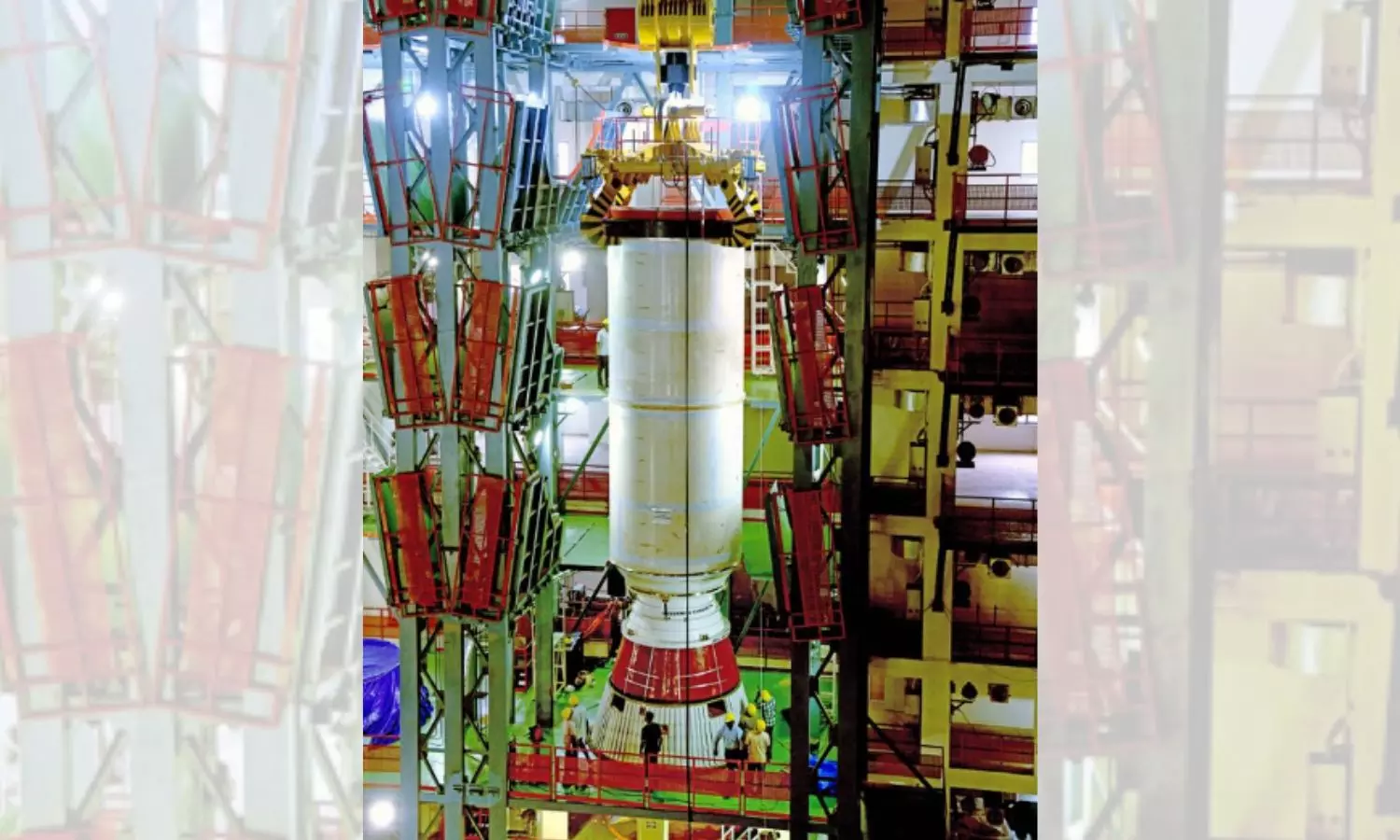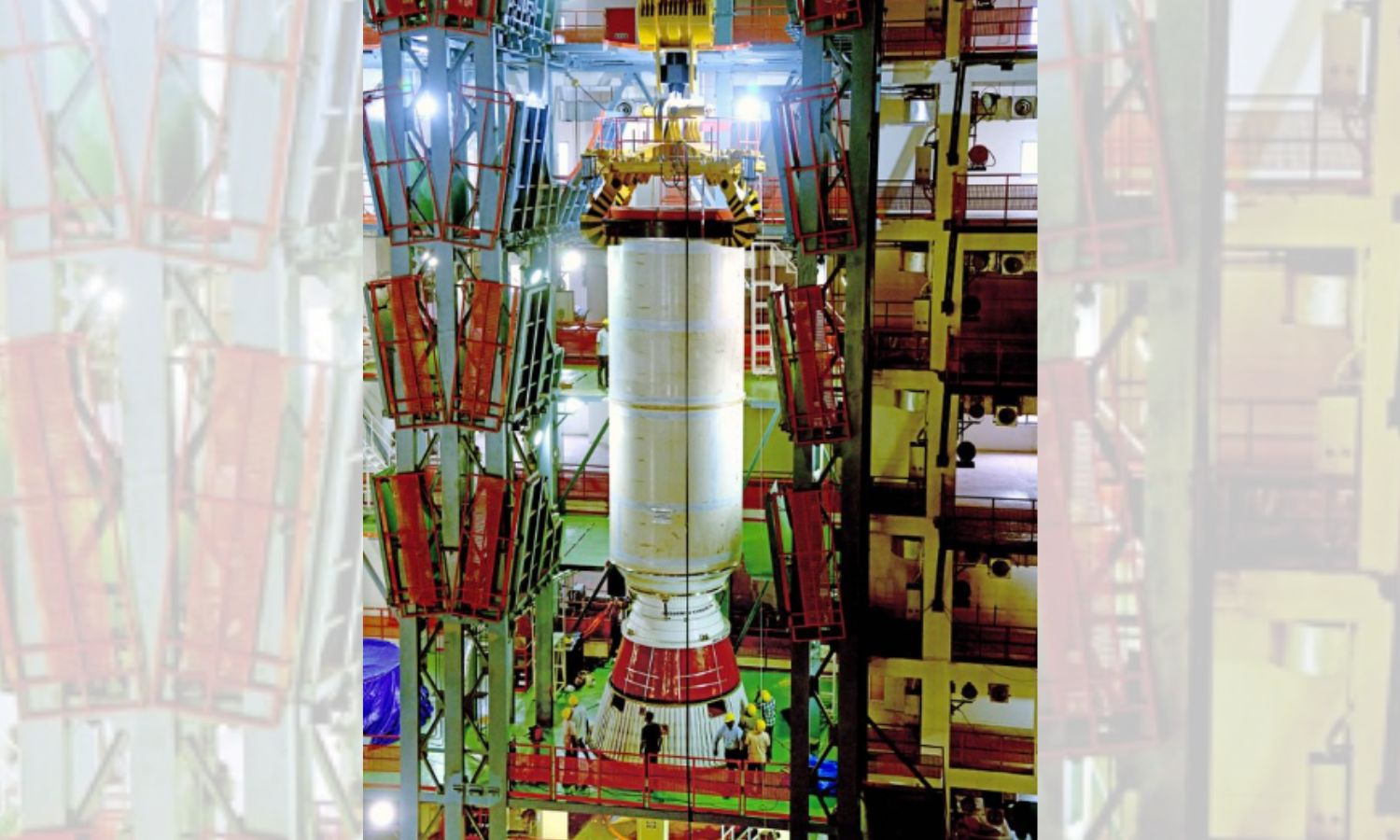
Tirupati: he Indian Space Research Organisation has commenced the assembly of the Human-Rated Launch Vehicle Mark-3 (HLVM3) at the Satish Dhawan Space Centre in Sriharikota.
This coincides with the 10th anniversary of the landmark LVM3-X/CARE mission and is a significant milestone in India’s journey toward its maiden human spaceflight under the Gaganyaan mission.
The first crewless flight, designated HLVM3-G1/OM-1, is scheduled for launch in the coming months. The stacking of the nozzle end segment with a full-flex seal nozzle of the S200 motor at 8.45am on Wednesday marked the launch’s preparations, at SDSC-SHAR.
The S200 motors, critical to the vehicle, will undergo further assembly, including segment stacking, integration of control systems and avionics.
Both the L110 liquid stage and the cryogenic C32 stage are ready at the launch complex.
Meanwhile, the Crew Escape System components have arrived at SDSC. Integration of the crew module is progressing at the Vikram Sarabhai Space Centre, and the service module assembly is under way at the U R Rao Satellite Centre. The orbital module integration and tests will follow at URSC in Bangalore.
The anniversary recalls the successful LVM3-X/CARE mission on December 18, 2014. On that day, the experimental LVM3-X vehicle carried a 3775kg crew nodule to a suborbital altitude of 126km. After controlled re-entry using thrusters, the module descended into the Bay of Bengal, 1,600km from SDSC, aided by parachutes for a smooth splashdown.
This mission was part of pre-project activities for the Human Spaceflight Project, preceding the Gaganyaan mission’s formal approval in 2019.
A decade later, ISRO has advanced in its efforts. HLVM3 is an evolution of LVM3, enhanced for human safety and reliability. It incorporates a robust crew escape system to ensure crew safety from launch through atmospheric flight.
The three-stage vehicle, standing 53 metres tall and weighing 640 tonnes, can carry payloads of up to 10 tonnes to low-Earth orbit.
The LVM3-X/CARE mission laid the groundwork for subsequent advancements including the vehicle’s aerothermal performance during re-entry, thermal protection systems, parachute-based deceleration mechanisms and recovery operations.
The mission validated several technical milestones, such as synchronized booster operations, Vikas engine performance in the L110 stage, control-sharing algorithms and complex separation mechanisms.
These developments have shaped ISRO’s human spaceflight programe. The CARE mission informed critical redesigns of the Crew Module, leading to improved safety margins and redundancy mechanisms.
Tests, including pad abort trials and air-drop experiments, have further validated crew safety systems.
The human-rated HLVM3 has undergone rigorous ground and flight testing, ensuring all systems meet stringent safety standards. The crew escape system offers an escape provision throughout the ascent phase, enhancing confidence for future manned missions.
As ISRO prepares for its maiden human spaceflight, the crewless Gaganyaan missions will provide vital data to refine systems and ensure astronaut safety. Beyond Gaganyaan, the mission aims to establish the Bhartiya Antriksh Station (BAS), a critical step in India’s long-term space exploration roadmap.
Leadership from the LVM3-X/CARE mission continues to play a pivotal role in ISRO’s journey.
The then mission director S Somanath now serves as Secretary to the Department of Space and chairman of ISRO, while Unnikrishnan Nair, the payload director of the LVM3-X/ CARE mission, became the founding director of the Human Space Flight Centre, Bengaluru and now leads the Vikram Sarabhai Space Centre, Thiruvananthapuram.
Key Highlights:
– ISRO commenced the assembly of the Human-Rated Launch Vehicle Mark-3 at SDSC-SHAR on the 10th anniversary of the LVM3-X/CARE mission
– The first crewless flight, HLVM3-G1/OM-1, is scheduled for launch in 2025 under the Gaganyaan mission
– Stacking of the S200 motor nozzle end segment began, officially launching the HLVM3 assembly campaign
– Assembly of S200 motor segments, control systems and avionics is under way, and the L110 and C32 stages are ready at the launch complex
– Crew Escape System elements are at SDSC, while the Crew Module is being integrated at VSSC and the Service Module at URSC
– The LVM3-X/CARE mission on December 18, 2014, successfully tested the crew module re-entry and splashdown, providing foundational data for human spaceflight
– HLVM3 is a human-rated variant of LVM3, designed for enhanced safety and reliability with a payload capacity of 10 tonnes to low-Earth orbit, and equipped with a crew escape system operational during all ascent phases
– Validation of critical systems during the LVM3-X/CARE mission, including synchronized booster operations, thermal protection systems and re-entry technologies
– Insights from CARE have informed crew module redesigns, pad abort tests and safety mechanisms for Gaganyaan
– The Gaganyaan program lays the groundwork for the Bhartiya Antriksh Station (BAS) and expands India’s space exploration capabilities.
